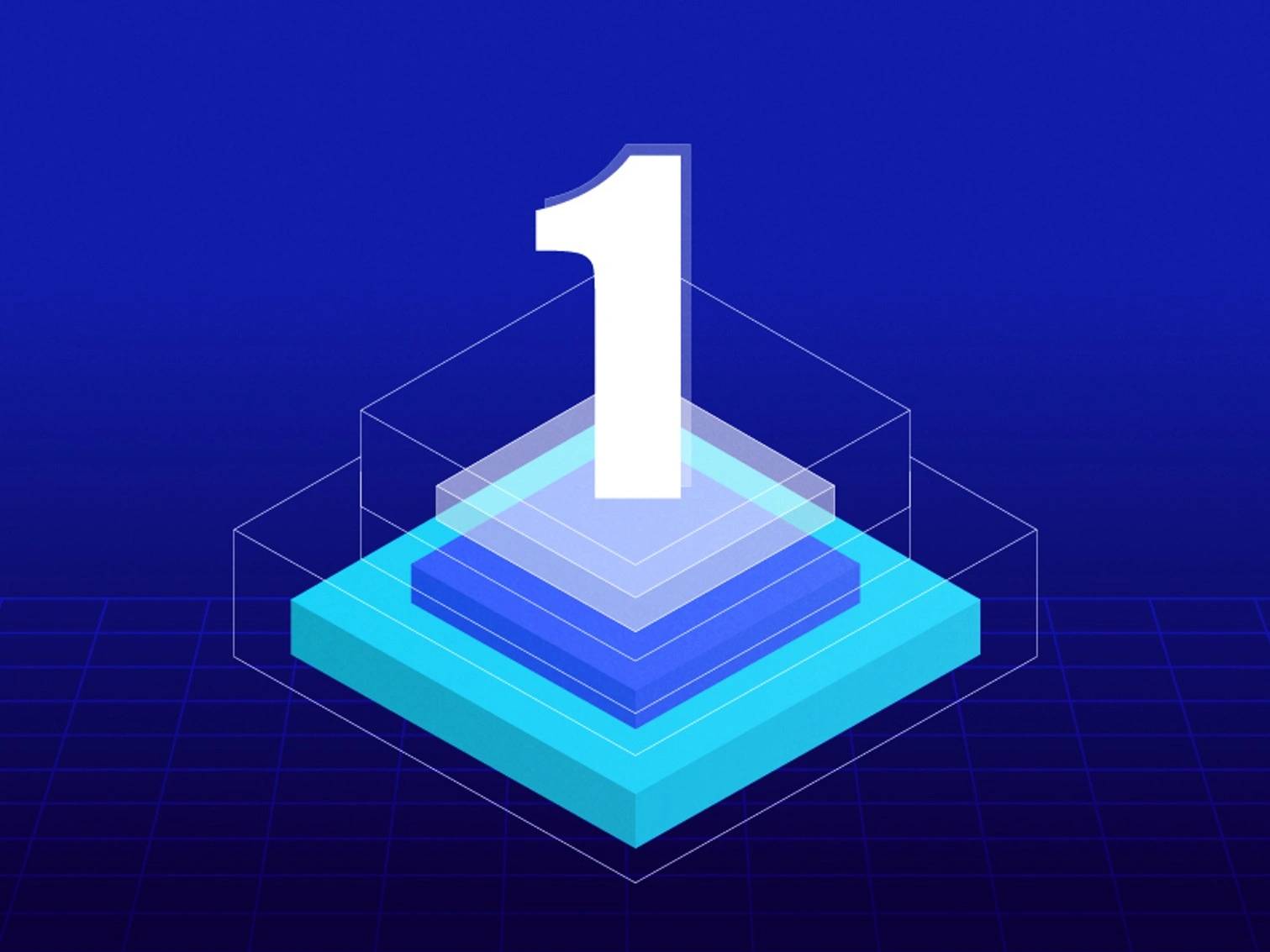订阅 wiki
Share wiki
Bookmark
Layer 1
Layer 1
Layer 1 区块链是区块链架构的基础层,作为主要和自主的链运行,交易在其上直接执行和确认,并为去中心化应用程序和智能合约提供必要的基础设施。[2]
概述
Layer-1 区块链通常被称为区块链网络的“核心”或“基础”,因为它们为构建在网络之上的所有其他应用程序和协议提供基础设施。它们是唯一直接负责维护[分布式账本]、[验证]交易以及保护网络免受恶意行为者侵害的层。[1][2]
Layer 0 和 Layer 1 在区块链技术中的主要区别在于,Layer 0 是提供基础设施的基础层,而 Layer 1 是维护安全交易协议的核心架构。[1]
Layer-1 区块链的核心是[共识机制],负责验证交易并将其记录到[账本]中。它确保账本是不可变的,并且可以被网络中的所有参与者信任。Layer-1 区块链网络上使用的常见共识机制包括 工作量证明 (PoW)、权益证明 (PoS) 和 委托权益证明 (DPoS)。[1]
Layer-1 区块链技术是许多领先的公共区块链网络的基础,例如 比特币 和 以太坊。它也是许多 去中心化应用程序 (DApps)、智能合约 和协议的基础技术。[1]
与构建在 Layer-1 区块链之上的二级层或“Layer-2”解决方案(用于增强可扩展性和速度)不同,Layer-1 区块链独立运行,并且不依赖于另一个区块链来实现其功能。该系统确保区块链保持安全、透明和不可变。一旦交易记录在 Layer-1 区块链上,更改它将需要大量的计算工作,这使得单个实体实际上不可能操纵数据。[2]
Layer 1 区块链的关键特性
共识机制
Layer-1 区块链采用各种[共识机制]来验证交易并在网络参与者之间达成协议。Layer-1 区块链中使用的流行共识算法包括 工作量证明 (PoW)、权益证明 (PoS) 和 委托权益证明 (DPoS) 等。[2][3]
安全性
Layer-1 区块链通过利用加密算法和去中心化网络结构来优先考虑安全性。区块链的不可变性(通过 [加密哈希] 实现)确保了网络上记录的交易的完整性和防篡改性。[3]
可扩展性
Layer-1 区块链面临可扩展性的挑战,因为它们需要在不影响效率的情况下容纳大量交易。一些 Layer-1 协议采用创新技术,例如 [分片]、[侧链] 和状态通道,以增强可扩展性和吞吐量。[3]
智能合约
Layer-1 区块链的关键功能之一是执行[智能合约]的能力。许多 Layer-1 区块链支持执行智能合约,这些智能合约是自我执行的合约,其协议条款写入代码行中。此功能允许无需信任的自动化交易,使区块链成为各种应用程序的多功能平台,而不仅仅是简单的金融交易,从而减少了对中介的需求并提高了透明度。[2][3]
在讨论 Layer-1 区块链时,另一个重要的考虑因素是它们在更广泛的区块链生态系统中的作用。作为基础层,它们为 [Layer-2] 解决方案和 [去中心化应用程序] 奠定了基础。Layer-1 区块链通常有自己的原生加密货币,例如比特币区块链的比特币或以太坊的以太币,用于促进交易和激励网络参与。[2][3]
Layer 1 的局限性和挑战
Layer 1 区块链旨在提供基本的区块链功能。任何区块链的主要目标都是优化去中心化、安全性和可扩展性。由于难以在这三者之间取得平衡,因此实现所有这三个概念被称为区块链三难困境。
Layer-1 区块链通常面临与可扩展性和交易速度相关的挑战。随着用户和交易数量的增长,Layer-1 区块链的容量可能会成为瓶颈。为了解决这个问题,一些较新的 Layer-1 区块链使用不同的共识算法和架构设计,旨在提高[吞吐量]并降低[交易费用]。尽管取得了这些进展,但许多流行的 Layer-1 区块链(如 [比特币] 和 [以太坊])正在开发或已经拥有 [Layer-2] 解决方案,这些解决方案与基础层协同工作以提高性能。
早期的 Layer 1 (L1) 链(特别是比特币和以太坊)优先考虑去中心化和安全性,但牺牲了网络的可扩展性。这促使 L1 开发人员修改其设计以优先考虑可扩展性或开发“链下”替代解决方案。L1 链可以通过修改其原生架构来提高可扩展性,方法有几种。[3] 这些包括:
增加区块大小
区块越大,每个区块可以“容纳”的交易就越多,从而提高网络速度。缺点是网络安全计算机(节点)必须提高其硬件要求,这会增加中心化的风险。
更改共识机制
[权益证明 (PoS)] [共识机制] 通常比 [工作量证明 (PoW)] 共识机制更快且资源消耗更少。尽管如此,有些人认为这是以牺牲安全性不足和中心化为代价的。
分片
[分片] 使 Layer 1 链能够将其数据划分为预定数量的不同数据组件(称为分片),从而有助于疏通网络并提高交易速度。但是,分片链之间的通信可能很复杂,从而导致区块链安全性受到损害。
Layer 1 (L1) 和 Layer 2 (L2) 之间的区别
[Layer 2] 区块链存在于基础区块链 Layer 1 之上。L2 依赖于 L1 区块链来实现安全性和数据可用性。L2 的主要目的几乎总是提高 L1 网络的可扩展性。以下是 L1 和 L2 区块链之间的主要区别:[4]
| 属性 | Layer 1 | Layer 2 |
|---|---|---|
| Gas 费用支付 | Gas 费用以原生 L1 代币支付 | 有些使用 ETH 支付 Gas 费用,而另一些(例如 Polygon)使用其治理代币支付费用 |
| Gas 费用成本 | 几乎总是高于 L2 | 通常低于 L1 |
| 可扩展性 | 由于侧重于安全性和去中心化,因此可扩展性有限 | 增强的可扩展性 |
| 安全性 | 更高级别的安全性和去中心化 | 可能更加中心化,这会增加安全风险 |
Layer 1 区块链的用例
以下只是 Layer 1 区块链众多应用中的一小部分。[5]
- 数字货币: Layer 1 区块链的关键应用之一是作为数字货币,用户可以在无需中介的情况下以安全的方式转移资金。
- 去中心化金融 (DeFi): Layer 1 区块链用于开发去中心化金融应用程序,例如借贷平台、稳定币和去中心化交易所。
- 供应链管理: Layer 1 区块链可用于提高供应链管理的透明度和可追溯性,从而防止欺诈和伪造。
- 身份管理: Layer 1 区块链可用于安全地存储和管理个人数据,允许用户控制其数据并同意其使用。
- 投票系统: Layer 1 区块链可用于构建安全透明的投票系统,从而防止欺诈并提高选民信心。
- 游戏: Layer 1 区块链可用于构建去中心化游戏平台,用户可以在无需中心化机构的情况下交易虚拟资产和玩游戏。
Layer 1 示例
发现错误了吗?
